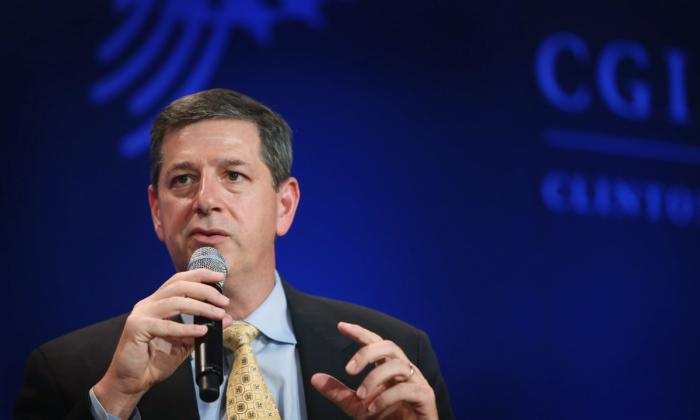The all-mighty American consumer, whose spending drives the economy, is reaching a breaking point and is on the verge of folding, according to former Walmart CEO Bill Simon.
“That sort of pileup wears on the consumer and makes them wary,” Mr. Simon told the outlet. “For the first time in a long time, there’s a reason for the consumer to pause.”
Consumer spending is a major driver of the U.S. economy, accounting for roughly two-thirds of gross domestic product (GDP).
Mr. Simon, who now serves on the Board of Directors for Darden Restaurants and Hanesbrands Inc., said that, after a long period of cheap money cut short by the Federal Reserve’s rapid rate hikes in response to soaring inflation, consumers are now beginning to buckle.
“Consumers had an incredible 10-, 12-year run,” he told CNBC’s “Fast Money” program. “Markets were buoyant. Interest rates were low. Money was available.”
But now, the music has stopped, and the party is grinding to a halt.
Faced with soaring inflation that remained persistently high despite predictions that the price spike would be short-lived, Fed officials have pushed the benchmark federal funds rate quickly from near zero in March 2022 to its current range of 5.25–5.5 percent.
Inflation ‘Still Above Comfort Levels’
Mark Hamrick, senior economic analyst at Bankrate, told The Epoch Times in an emailed statement that even though inflation has fallen from its recent peak, it’s still well above many consumers’ comfort level.“For consumers trying to manage their personal finances amid inflation, the situation with prices is a bit like battling illness. Being past the worst of it isn’t the same as feeling better or robust,” he said.
Many economists see a relatively high probability of a recession in the coming year, with signals like waning consumer confidence an often-cited canary in the coal mine.

Waning Consumer Strength?
“Write-in responses showed that consumers continued to be preoccupied with rising prices in general, and for groceries and gasoline in particular. Consumers also expressed concerns about the political situation and higher interest rates,” Dana Peterson, chief economist at the Conference Board, said in a statement.
A recent survey carried out in September by CNBC-Morning Consult found that 92 percent of U.S. adults have cut back on spending over the past six months.
Looking forward, over three-quarters of those polled said they plan to cut back on spending for non-essential items.
Forty-one percent of households say they’re financially worse off than a year ago, up from 40 percent in August.
Unsurprisingly, given the Fed’s series of aggressive rate hikes and speculation that more could be in store, households’ perceptions of and expectations for credit conditions deteriorated.
The survey also gauged consumer spending intentions one year ahead. While these remained unchanged in September at 5.3 percent, they generally fell steadily from a peak of 9.0 percent in May 2022.
A number of large retailers, such as Target, have reported a drop in discretionary spending.
“There’s a real spending issue coming up and I think that’s going to impact earnings.”







